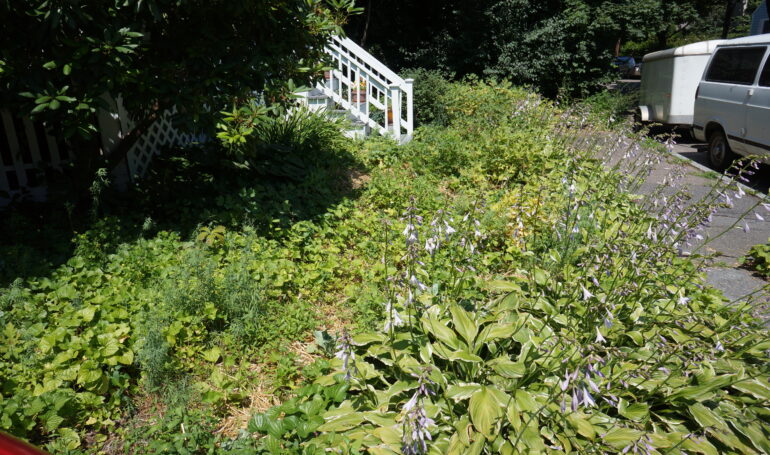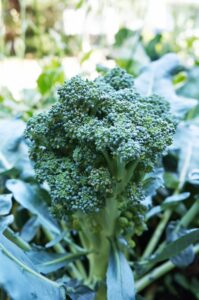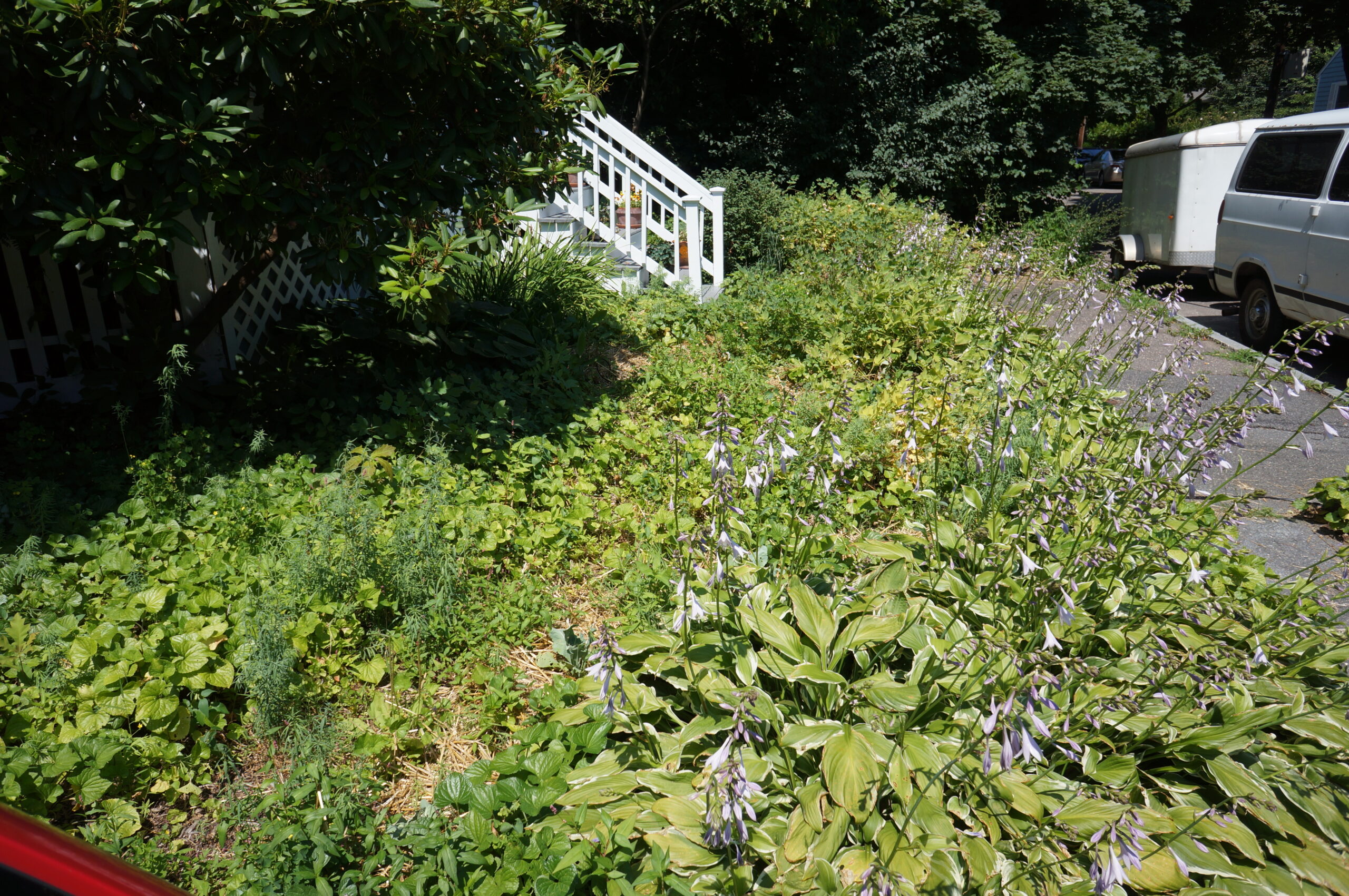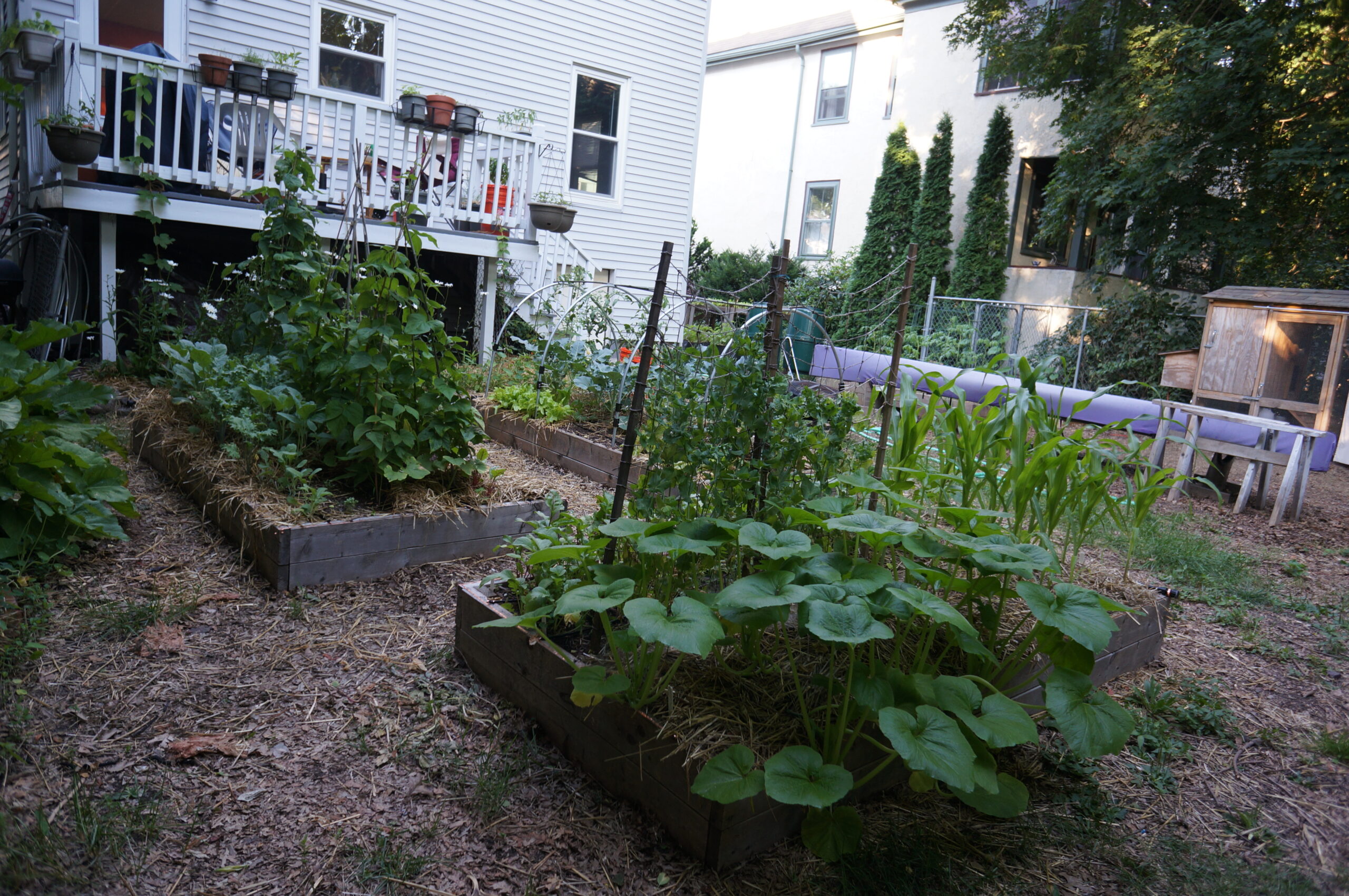
Garden Monday : Curbside Brassica
Let’s talk about lawns. You know, those lush, green, perfectly trimmed and edged carpets that adorn some of your neighbors front yards. For some, a thick Kentucky Bluegrass invokes images of checkered-blanket picnic spreads with children and dogs frolicking about. Or, for the less attentive of us, they may invoke a degree of keepin’-up-with-the-Joneses envy or an annoyance by gated community rules dictating proper curbside presentation.
For me, visions of chemical hell and environmental destruction Rachel Carson-style pop to mind when I see these perfectly manicured green patches. To keep a deep, thick, bluish-green rug at your front step takes a lot of work and, typically, a nasty brew of fertilizer and pesticide to ‘manage’ it. Despite the name, Kentucky Bluegrass is actually European native. It also has certain important agriculture applications for grazing stock and re-vegetion throughout the United States. Here, I am talking about those trophy lawns with no agricultural purpose except requiring frequent trimming by a two-stroke, gas-guzzling mower and continuous applications of chemical cocktails to maintain that natural luster, bounce and brush-able thickness.
My preference of yard care is a blend of maximizing time and energy on edibles while minimizing investment in caring for perennials, clovers and crab grasses. The overgrown patch in front of my house consists of giant hostas, bushes of flaming bleeding hearts, an overgrown rhododendron and a patch of purple irises with a smattering of elephant ears, buckwheat, clover and some random bulbs I’ve punched into the ground over the years.
The front during a relatively tame part of the year is lush, green and blooming. Other times, well, let’s just say, there is a lot going on there. The neighbors might find it an eye-sore, especially those manicured-bluegrass sort of neighbors. Thankfully, those sorts of neighbors are few in my neck of the woods. Oh, yeah, I should also mention that we sprinkle broccoli, cauliflower, blueberries, gooseberries, currants and a few runt seedling between masses of perennials in my front yard.
That’s right, gasp! Vegetables growing in the front yard where anyone can see them! I am a huge fan of turning lawns into productive agricultural space. You don’t even have to tear out that lawn, you can use all that grass to feed the soil and thus, feed your new garden.
As a gateway garden that will certainly lead to more addictive gardening activities, I suggest finding yourself a nice, sunny 4-foot by 8-foot spot to make your first raised bed. It is really simple. You can frame the bed out of 2-inch by 12-inch boards. Line the bottom of the box with with wetted cardboard, newspaper or, even better, a few inches of raked leaves. Top that off with a pile of nice compost/soil mix from your local garden or landscaping store and you’ve made yourself a raised bed. Make it even simpler, albeit less tidy, by skipping the frame and just piling the material right on top of the grass.
Granted, my front yard is currently mostly unkempt perennials. I promise, my backyard harbors no secret stash of manicured blue grass either – just the beds, chicken, bees and trees. Over time I hope to increase the ratio of vegetables to perennials.
On the path to tipping that scale, I intermittently planted spare broccoli and cauliflower seedlings in the front yard last year. As it turned out, these brassicas did better in the front yard than in the back yard. In the front yard, they get a plenty of early day sunshine, but can cool down in the shade all afternoon. That mix proved so much better for them than the late day sunshine in the backyard that the front yard runt seedlings actually out did the stronger backyard seedlings.
So, this year, all our broccoli and cauliflower are planted in the front yard. Ultimately, we were rewarded with several beautiful and tasty heads of broccoli right growing right next to the front curb. Unfortunately, it seems birds are faster at retreiving the berries. They are also, clearly, more forgiving about unripe fruit. Frankly, those big, leafy hostas don’t provide nearly as much satisfaction as just one head of broccoli, or a handful of berries does, but I haven’t tried sauteed hosta over a bed of rice yet. Perhaps that’s a topic for another day.
As an experiment we tried runt seedlings for squash and cucumbers in the front yard. They didn’t fare as well as the brassicas, but one or two extra fruits is a win over manicured front lawns in my book.. We will certainly keep planting curbside brassicas and experimenting to find our next successful curbside crop. Perhaps there is a option out there for a bluish-green, carpet-like grass whose weekly trimmings make for a great addition to salad to serve as both a manicured lawns and an edible landscape.
So, whacha waiting for? Are you ready to forego that manicured lawn?


Leave a Reply